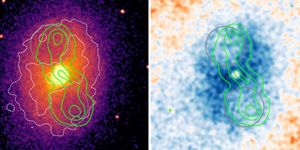Using Quantum Computing to Create Window Coverings that Block Heat, Save Energy
Cooling a hot room already takes a lot of energy. In fact, cooling accounts for over 10% of global energy costs. As climate change makes the planet warmer, that cost is only expected to continue rising. On top of that, cooling approaches currently have a negative effect on the environment as a whole, even contributing to the global rise in temperatures, a reality that smacks of irony.
Researchers have been searching for years for new ways to provide cooling technologies around the globe, including more energy efficient air condition units, in an attempt to help cool humanity without the excessive energy cost and risk to the environment.
A team of researchers at the University of Notre Dame are using quantum computing to help solve this problem. Their solution? A see-through window covering that allows sunlight in while block heat, keeping a room cooler and making it easier for air conditioning units to cool a room. The team’s work is published in a recent article published in ACS Energy Letters.
Specifically, the team used a transparent radiative cooler coating (TRC), which is designed to keep light that produces heat out of a given area, whether that’s a living room or a car. Based on their study, researchers estimate that their coating could cut energy costs by nearly a third, especially in exceptionally hot regions.
In order for the TRC to work, researchers created a design that requires several overlapping layers of material that must be arranged in a very specific way. To find the optimal arrangement, researchers used a predictive tool to generate data about a number of possible arrangements. Based on their findings from the predictive tool, researchers built a covering made from silica, alumina, and titanium oxide. The covering itself was incredible thin: only 1.2 micron-thick. That’s one millionth of a meter (1/1,000,000).
Researchers highlight that while the material is a create discovery, the quantum predictive tool is equally valuable, and could be used to generate other new materials in the future.
Sources: Science Daily; ACS Energy Letters; Guardian








